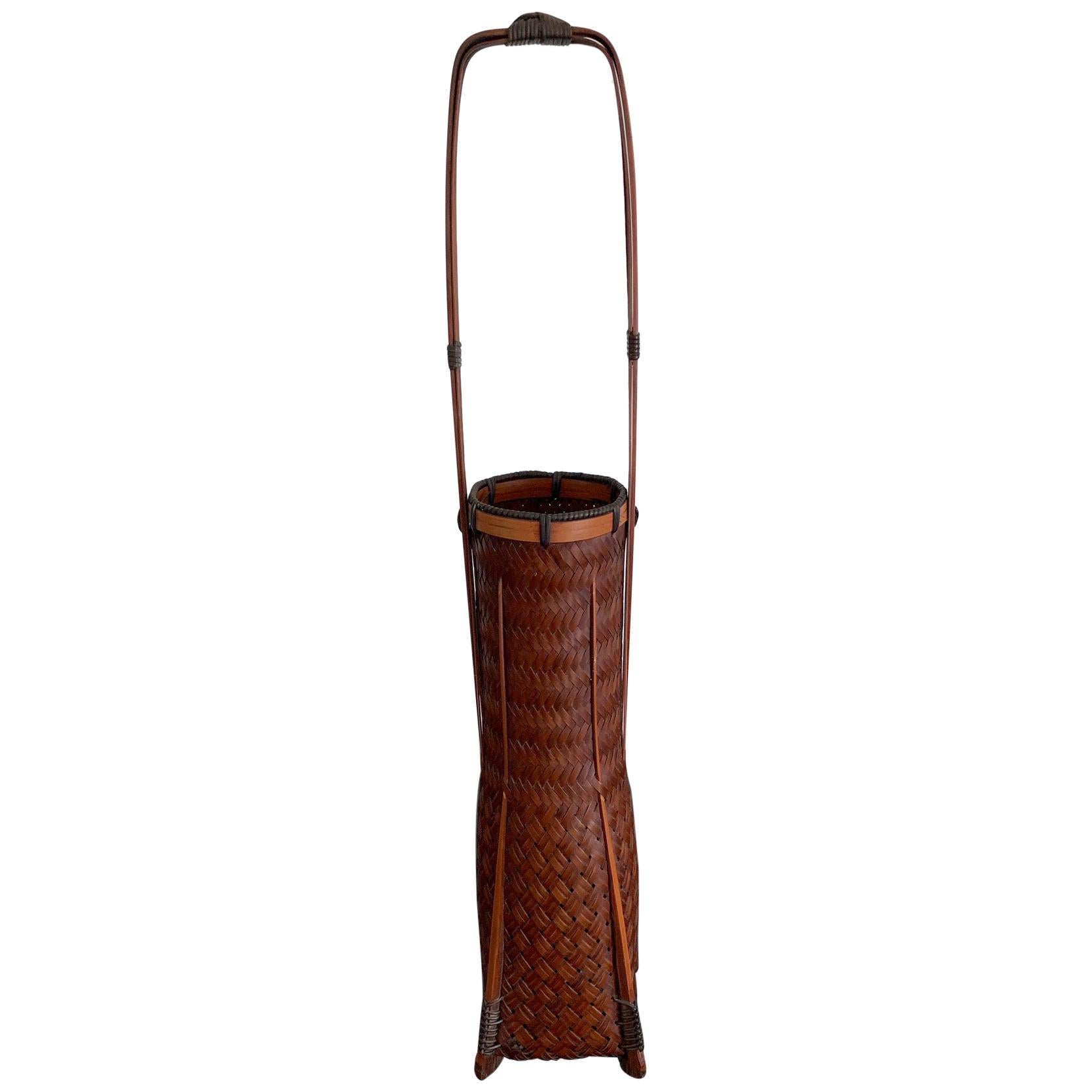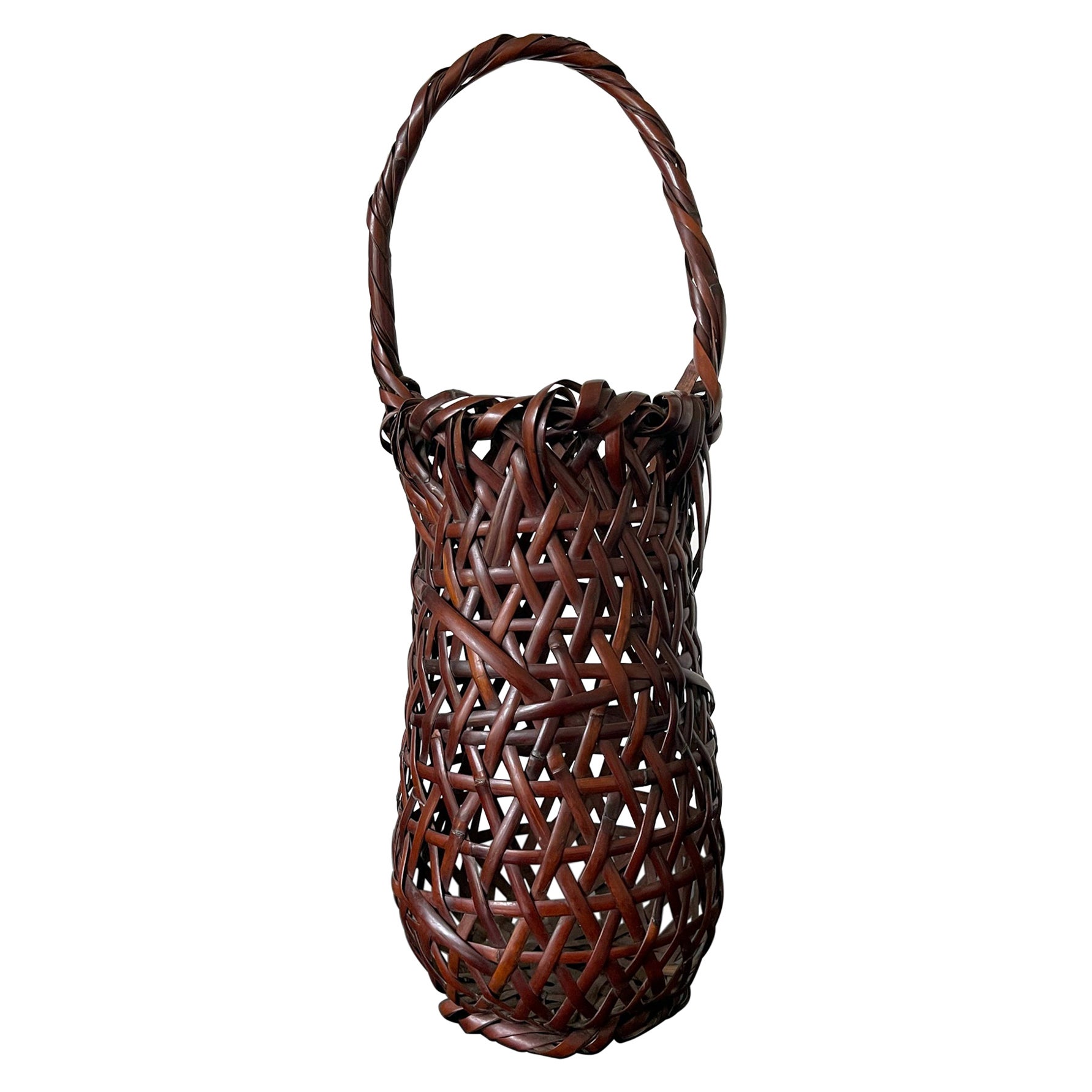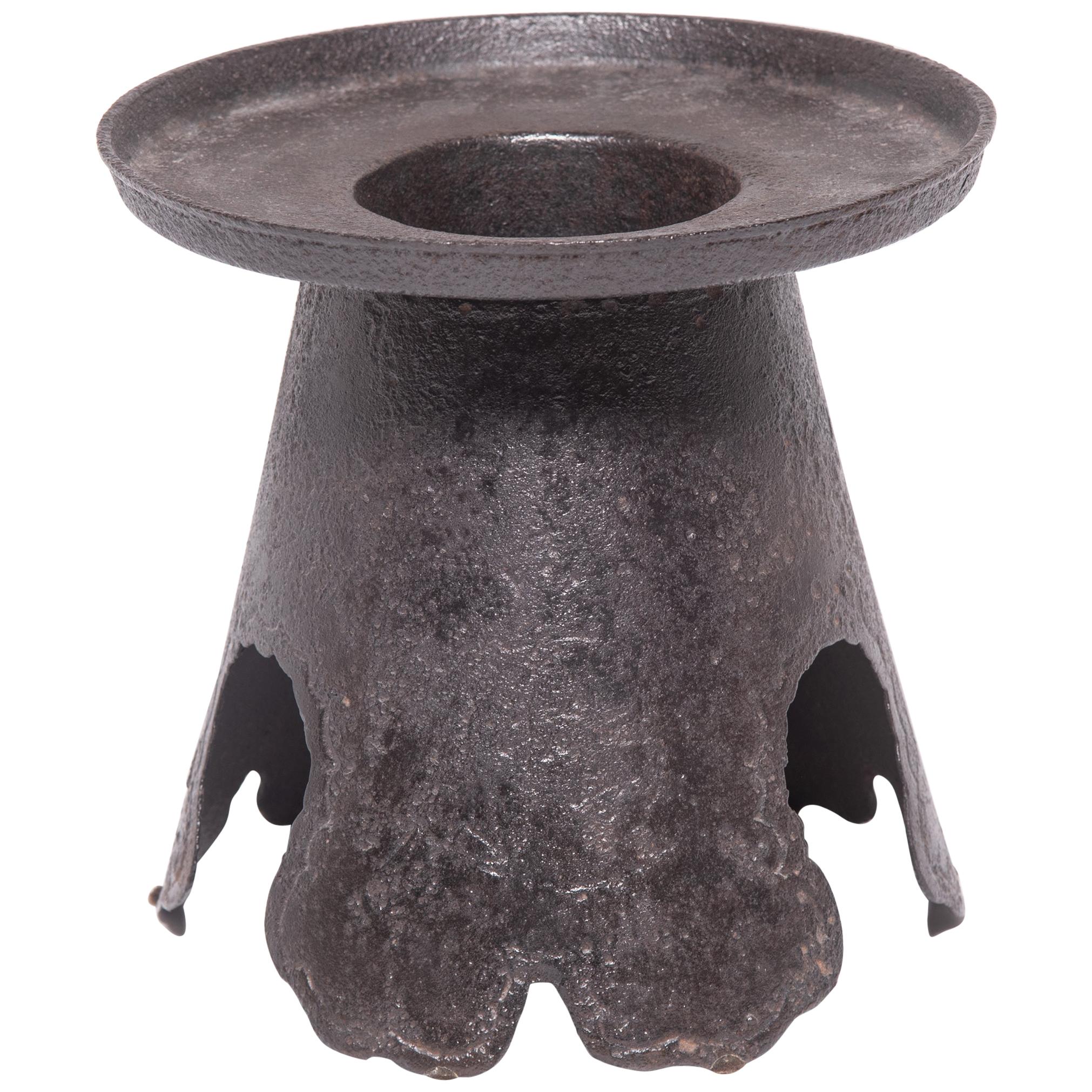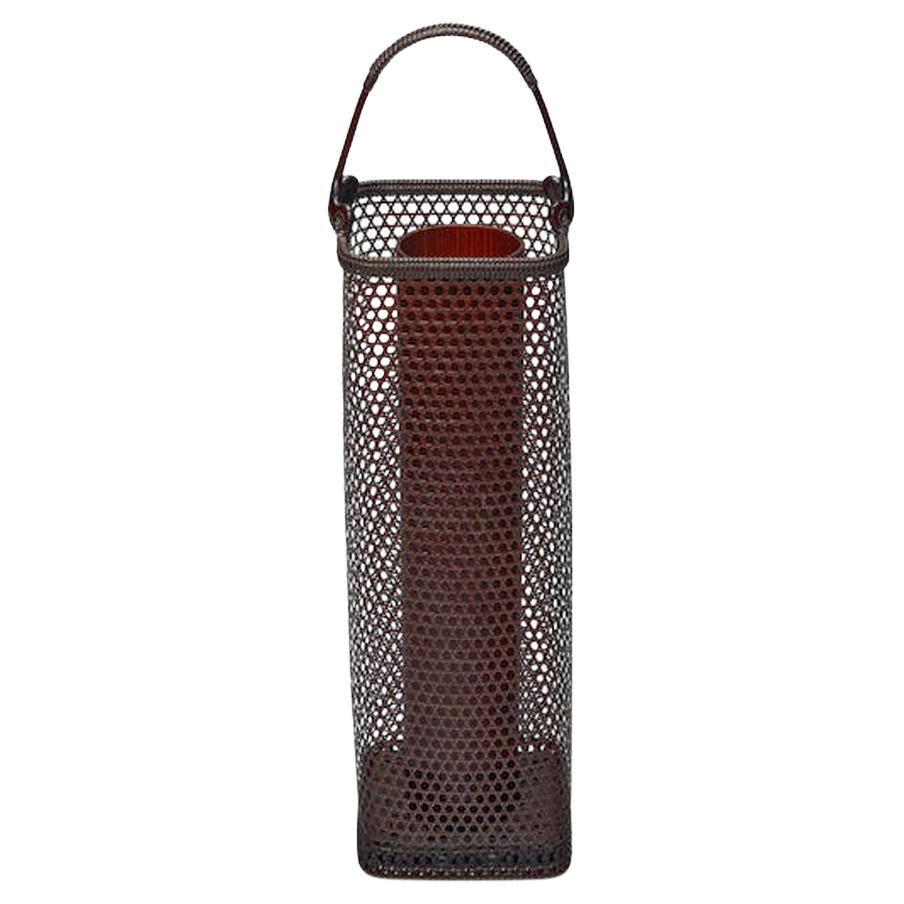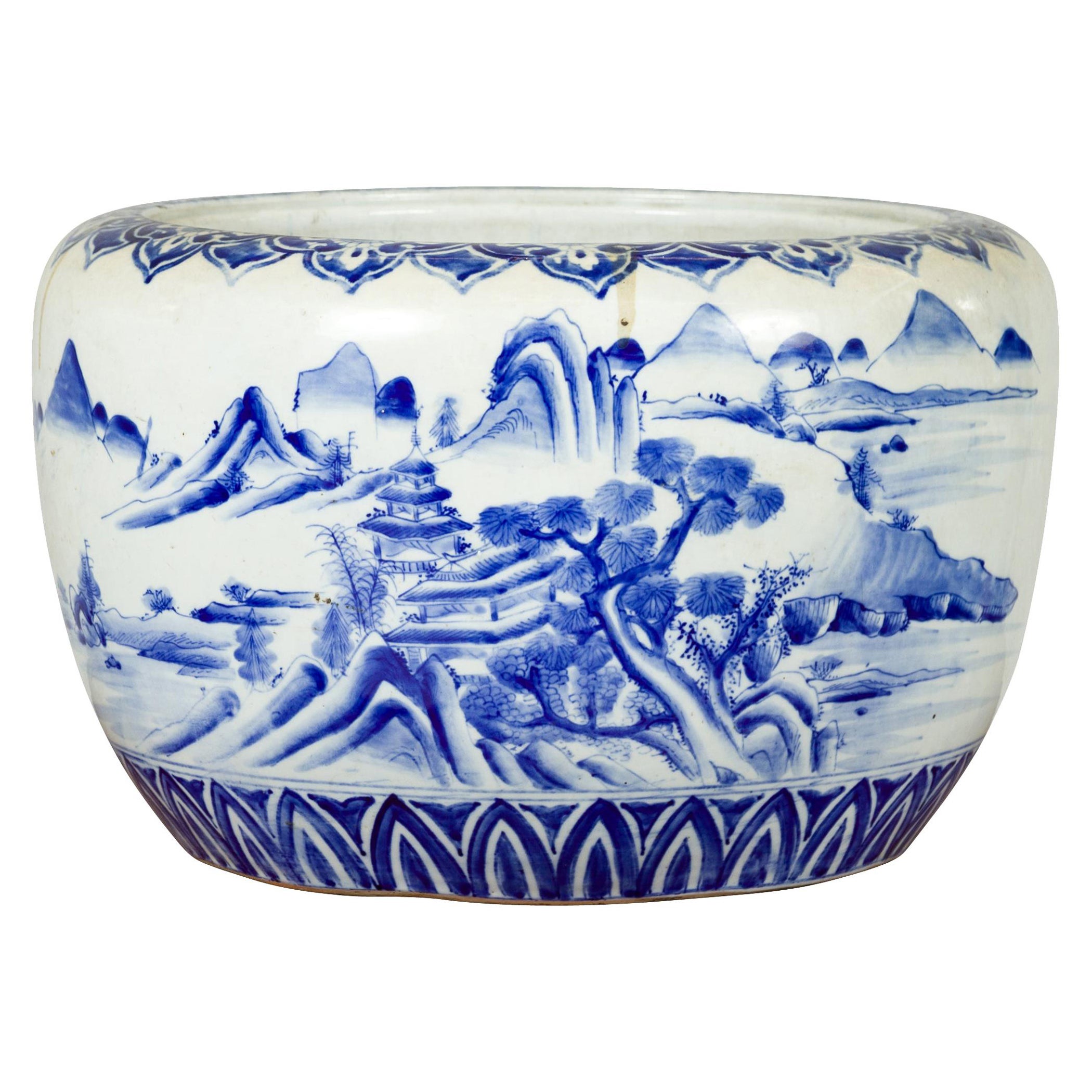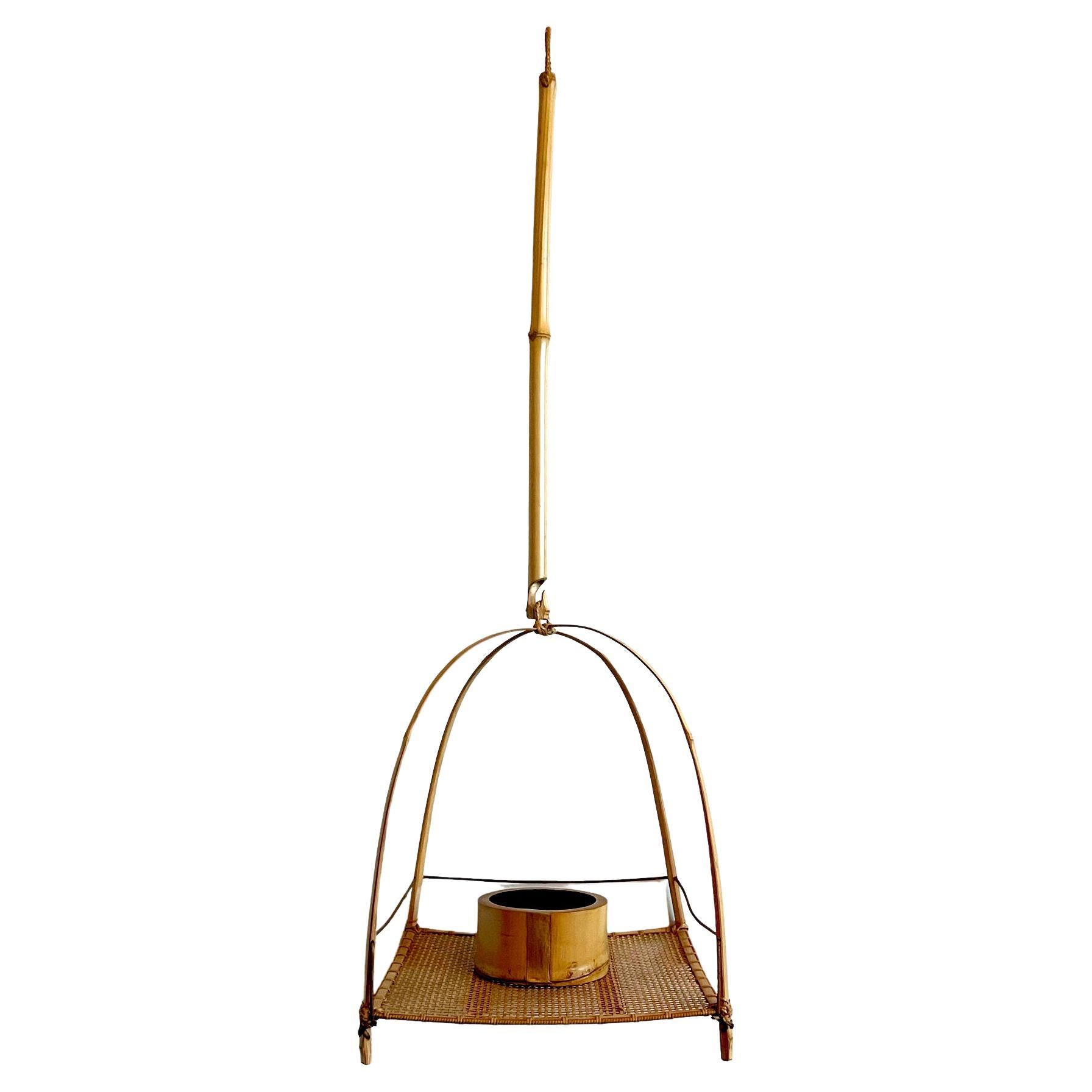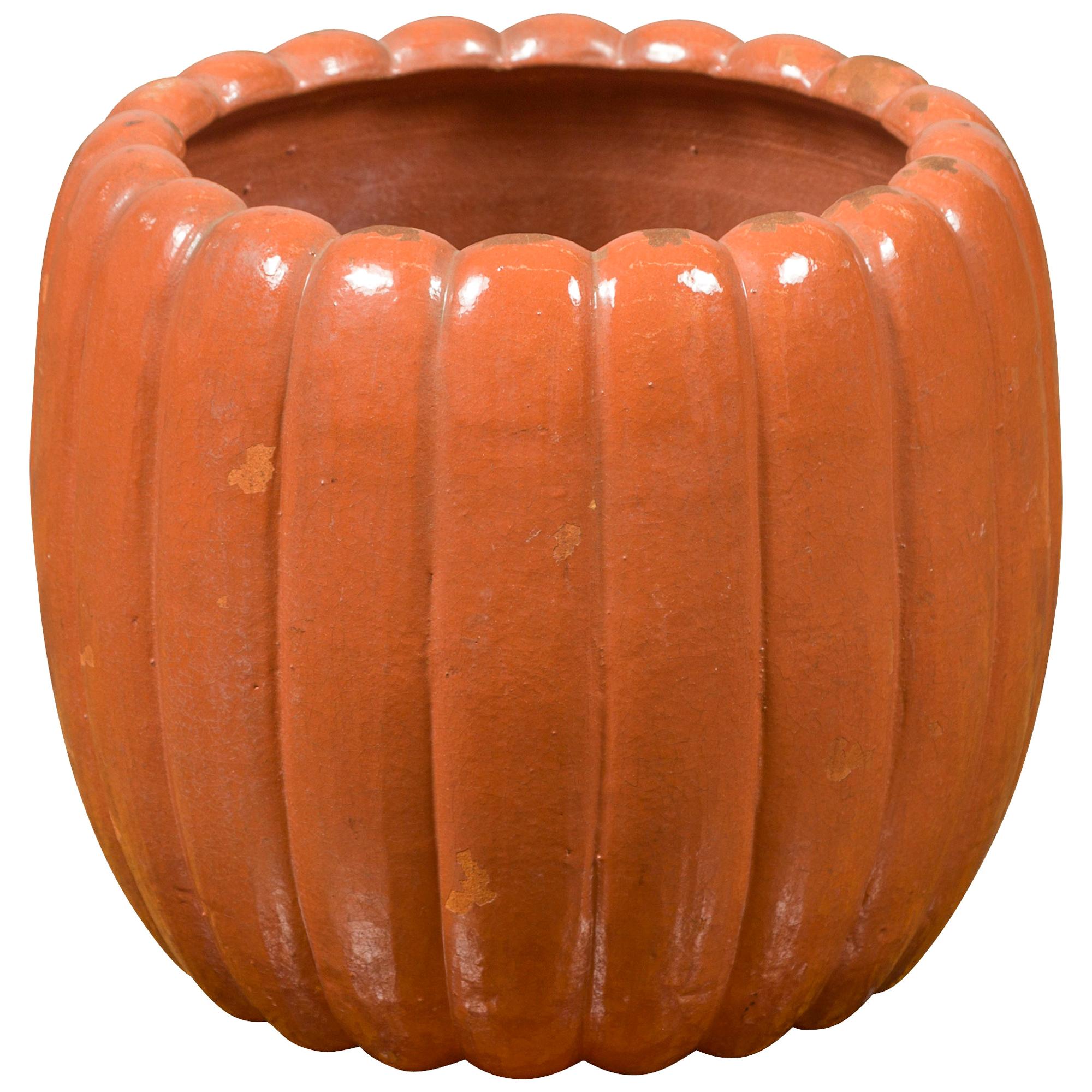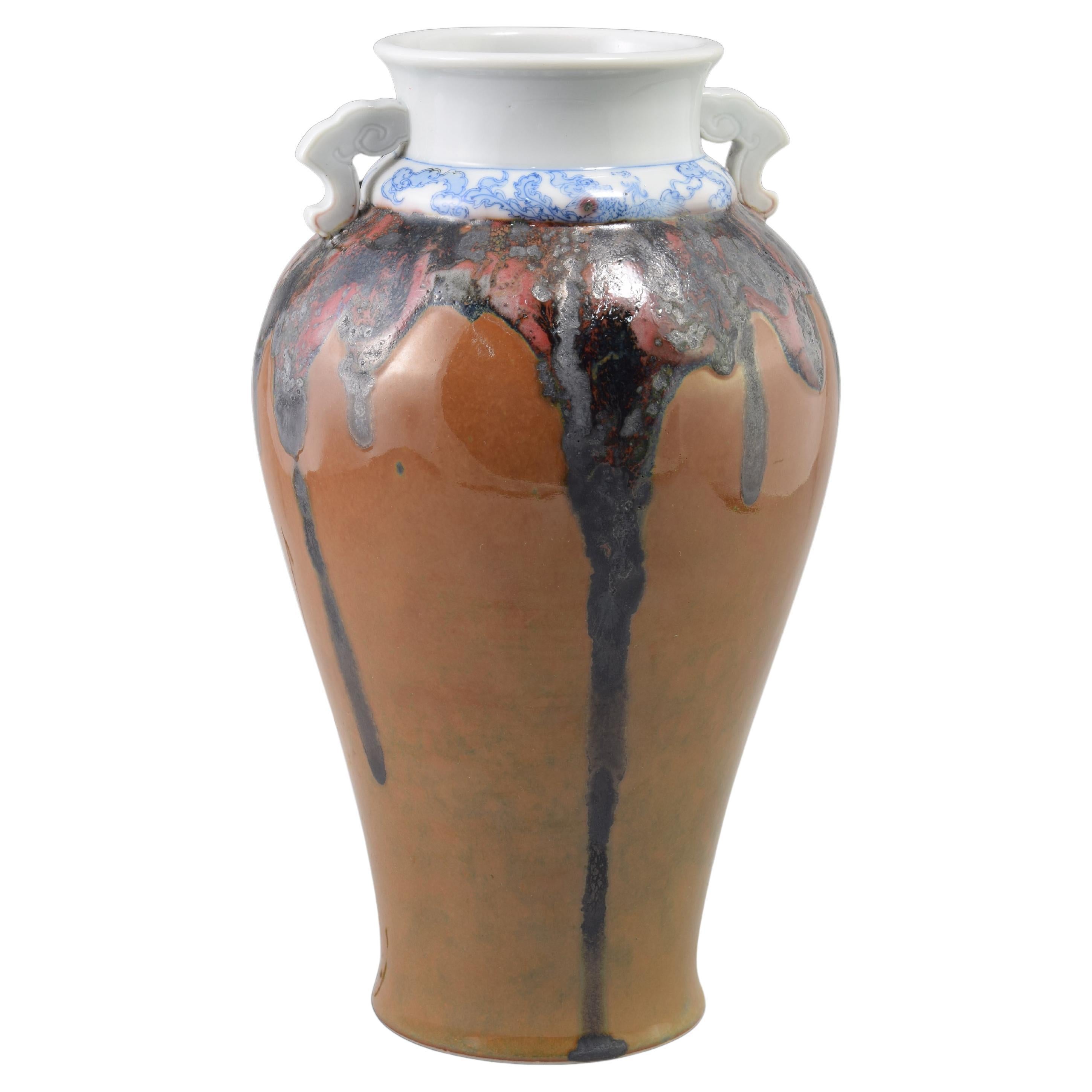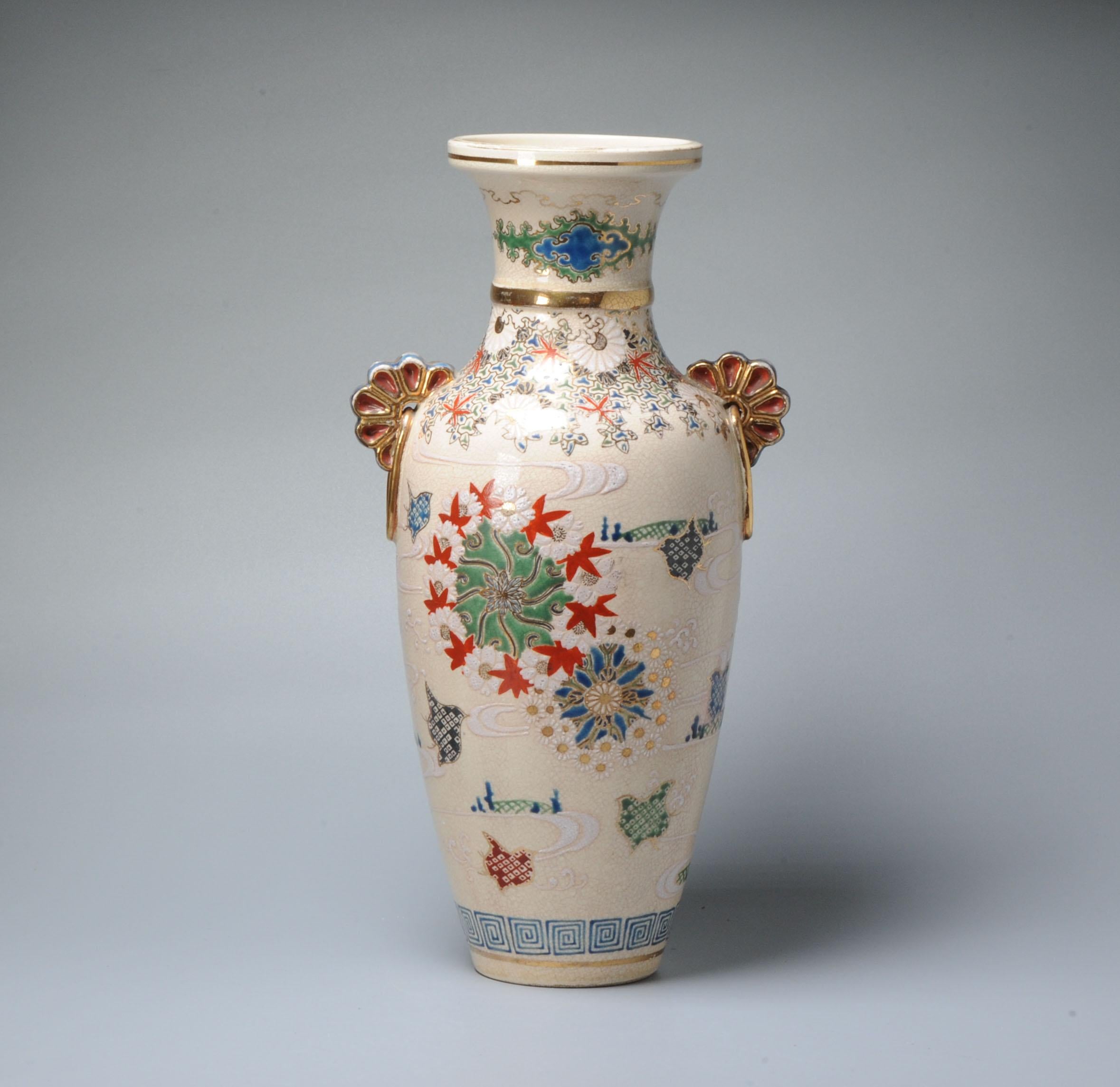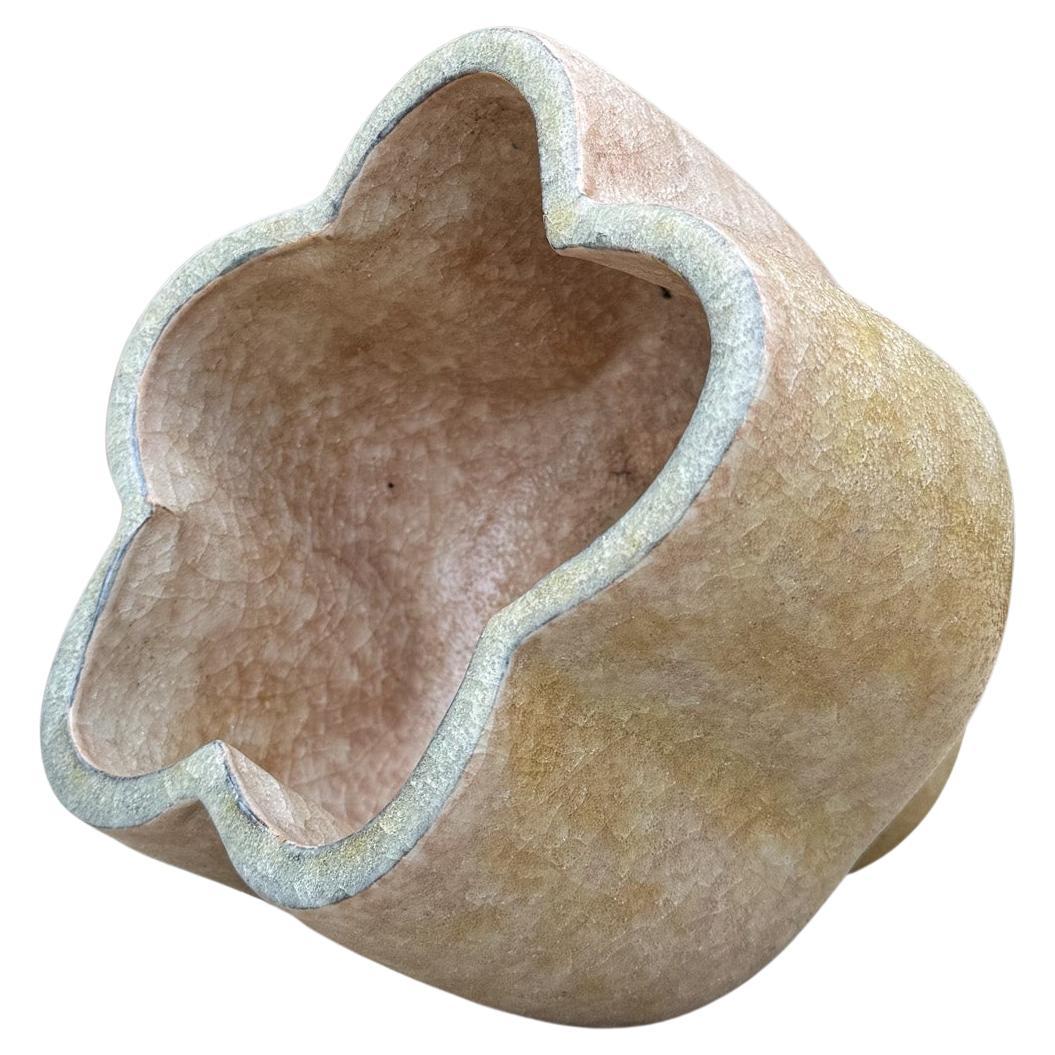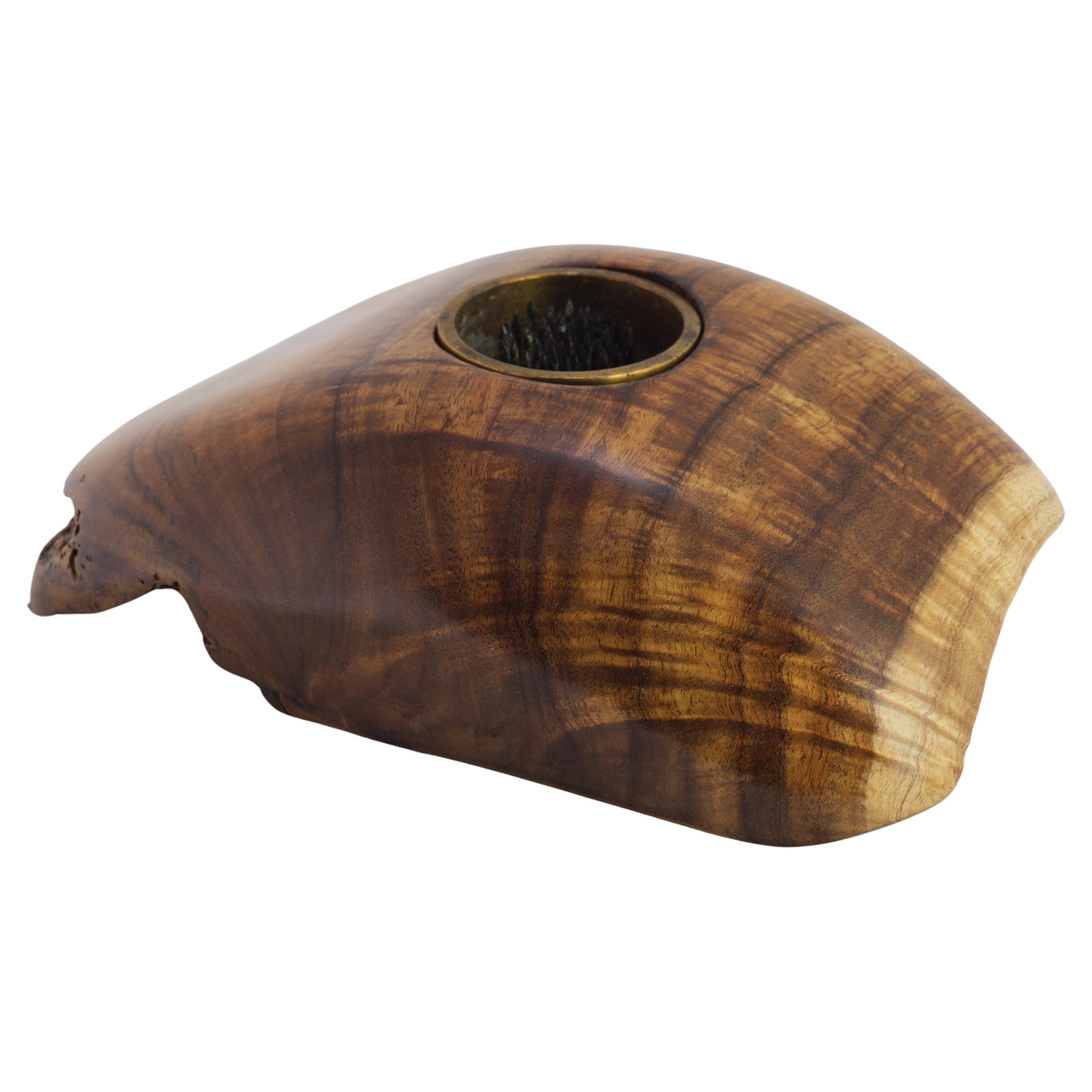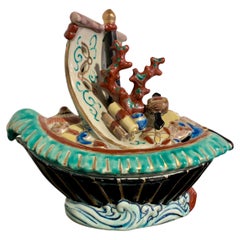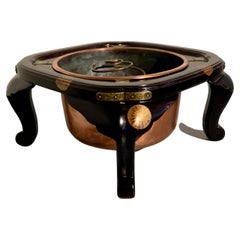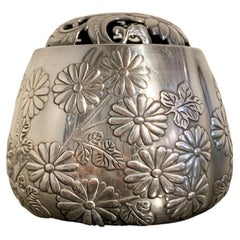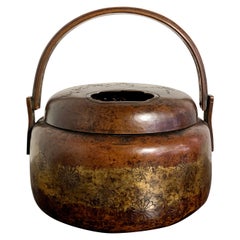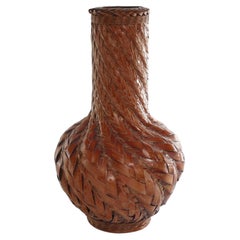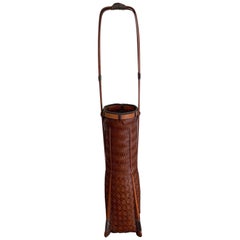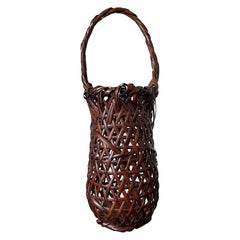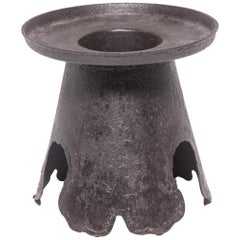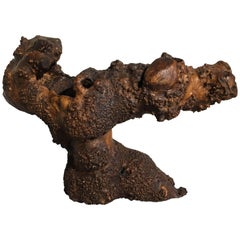
Japanese Root Wood and Burl Vessel for Ikebana, Taisho Period
View Similar Items
Want more images or videos?
Request additional images or videos from the seller
1 of 11
Japanese Root Wood and Burl Vessel for Ikebana, Taisho Period
About the Item
- Dimensions:Height: 12 in (30.48 cm)Width: 16 in (40.64 cm)Depth: 6 in (15.24 cm)
- Style:Taisho (Of the Period)
- Materials and Techniques:
- Place of Origin:
- Period:
- Date of Manufacture:circa 1920
- Condition:Wear consistent with age and use. With natural imperfections, but no breaks, cracks or repairs noted.
- Seller Location:Austin, TX
- Reference Number:1stDibs: LU89477106233
About the Seller
5.0
Gold Seller
Premium sellers maintaining a 4.3+ rating and 24-hour response times
Established in 2001
1stDibs seller since 2010
340 sales on 1stDibs
Typical response time: 1 hour
Authenticity Guarantee
In the unlikely event there’s an issue with an item’s authenticity, contact us within 1 year for a full refund. DetailsMoney-Back Guarantee
If your item is not as described, is damaged in transit, or does not arrive, contact us within 7 days for a full refund. Details24-Hour Cancellation
You have a 24-hour grace period in which to reconsider your purchase, with no questions asked.Vetted Professional Sellers
Our world-class sellers must adhere to strict standards for service and quality, maintaining the integrity of our listings.Price-Match Guarantee
If you find that a seller listed the same item for a lower price elsewhere, we’ll match it.Trusted Global Delivery
Our best-in-class carrier network provides specialized shipping options worldwide, including custom delivery.More From This Seller
View AllJapanese Kutani Treasure Boat 'Takarabune' Censer, Taisho Period, Japan
Located in Austin, TX
A wonderful Japanese Kutani porcelain incense burner, koro, in the form of a treasure ship, Takarabune, Taisho Period (1912 - 1926), Japan.
The censer boldly modeled as the legendary Takarabune, or Treasure Ship, a mythical ship said to carry the shichifukujin, the Seven Lucky Gods, around the heavens during the first days of the New Year, visiting lucky humans to bring blessings and prosperity.
The black bodied, single mast ship sails on the water, its sail full of wind and decorated with the character "takara", meaning treasure. The pierced top of the ship serving as the cover for the censer. It is loaded with magical items and treasure, most prominently, a large coral branch...
Category
Vintage 1910s Ceramics
Materials
Porcelain
Japanese Lacquer Hibachi with Imperial Chrysanthemum, Meiji Period, Japan
Located in Austin, TX
A simple and elegant Japanese lacquer hibachi stand with imperial chrysanthemum mon and copper liner, now modified as an usubata, late Meiji Period, ci...
Category
Antique Early 1900s Lacquer
Materials
Copper
Japanese Silver Incense Burner, Akoda Koro, by Nomura, Meiji Period, Japan
Located in Austin, TX
A lovely and luxurious Japanese silver incense burner of lobed melon form, akoda koro, marked jungin and signed Nomura, Meiji Period, circa 1900, Japan.
The silver koro...
Category
Vintage 1910s Japanese Meiji Metalwork
Materials
Silver, Sterling Silver
Japanese Parcel Gilt Copper Hibachi, Edo Period, 18th Century, Japan
Located in Austin, TX
A sublime Japanese parcel gilt copper hand warmer, hibachi, with chrysanthemum design, Edo Period, 18th century, Japan.
The hand warmer, called a...
Category
Antique 18th Century Japanese Edo Metalwork
Materials
Copper
Japanese Bronze Water Coupe, Eguchi as Fugen, Edo/Meiji Period, Japan
Located in Austin, TX
A very finely cast Japanese bronze water coupe in the form of the courtesan Eguchi riding an elephant, signed Kazutada, Edo to Meiji Period, mid 19th century, Japan.
The small and elegant bronze water coupe is exquisitely cast to depict a figure of a seated lady reading poetry upon the back of a large recumbent elephant. This image depicts the Courtesan of Eguchi as Fugen Bosatsu...
Category
Antique Mid-19th Century Japanese Meiji Scholar's Objects
Materials
Bronze
Japanese Edo Period Lacquer and Mother-of-Pearl Embellished Stoneware Koro
Located in Austin, TX
A highly unusual Japanese crackle glazed koro (incense burner or censer), lacquered and inlaid with mother-of-pearl embellishment, signed Gyokusen, Ed...
Category
Antique 19th Century Japanese Edo Scholar's Objects
Materials
Copper
You May Also Like
Early 20th Century Taisho/Showa Period Japanese Woven Bamboo Ikebana Vase
Located in Grythyttan, SE
Introducing an Exquisite Early 20th Century Taisho/Showa Period Japanese Woven Bamboo Ikebana Vase – A Timeless Masterpiece!
Step into t...
Category
Early 20th Century Japanese Taisho Vases
Materials
Porcelain, Bamboo
$760 Sale Price
52% Off
Elegant Japanese Lacquered Ikebana Bamboo Basket
Located in Atlanta, GA
A vintage Japanese ikebana made from lacquered bamboo basketry circa first half of the 20th century. This piece of bamboo art displays an very light and delicate classic tapered squa...
Category
Early 20th Century Japanese Japonisme Scholar's Objects
Materials
Bamboo, Rattan
$1,600 Sale Price
20% Off
Japanese Bamboo Basket Ikebana Suzuki Gengensai
By Suzuki Gengensai
Located in Atlanta, GA
An elegantly woven bamboo basket with handle as an ikenana container by Suzuki Gengensai (1891-1950) circa 1923-50. Suzuki Gengensai was from Kansai region and active in Osaka. He studied bamboo art under Yamashita Kochikusai (1876-1947) and became an independent artist in 1913. He received his artist name Gengensai in 1914 and in 1923 he changed the characters to Gen, a slight written variation of the character. This basket was signed in this later variation, which helps to date the piece to post 1923.
The basket is woven entirely in a free style irregular plating on the body and with a twisted bundled handle. The surface is lacquered in a deep reddish color. The seemingly less rigid technique renders the piece a more rustic and natural aesthetic that is more suitable for certain occasions. It is singed on the base with artist's signature in the variation post 1923.
A very similar basket of the irregular weaving but without the handle is illustrated in plate 72 in "Baskets Masterpieces of Japanese Bamboo Art...
Category
20th Century Japanese Japonisme Scholar's Objects
Materials
Bamboo
Japanese Usubata Ikebana Vessel, c. 1900
Located in Chicago, IL
This early 20th century iron vessel is a Meiji-era vase designed especially for ikebana, the Japanese art of floral arrangement. The two-piece vase was cast in the classical usubata (thin rim) form, with a broad, flat top with an upturned lip. Usubata vessels are typically cast of bronze and have been used in ikebana arrangements since the 16th century. The broad rim of this usubata vase...
Category
Early 20th Century Japanese Meiji Vases
Materials
Iron
Japanese Bamboo Basket Ikebana by Tanabe Chikuunsai II
By Tanabe Chikuunsai II 1
Located in Atlanta, GA
A woven bamboo flower Ikebana basket by Tanabe Chikuunsai II (1921-2000) from Showa era (1926-1989), circa 1950-1960s. The ikebana basket takes a vertical square form, the body was e...
Category
20th Century Japanese Japonisme Scholar's Objects
Materials
Bamboo, Wood
Japanese Taishō Period 1920s Blue and White Round Porcelain Planter
Located in Yonkers, NY
A Japanese Taishō period blue and white porcelain planter from circa 1920, with landscape scenes. Created in Japan during the early 20th century Taishō period, this exquisite blue an...
Category
Early 20th Century Japanese Taisho Ceramics
Materials
Porcelain
Recently Viewed
View AllMore Ways To Browse
Formations Pedestals
Japanese Burl Wood
Japanese Toad
Wood Craft Furniture
China Chinese
Size Two
Furniture Round
Antique Frames
Office Table Modern
Space Vintage
Vintage Wood Living Room Furniture
Rare And Vintage
Four Furniture
Light Italian
Italian Modern Glass
20th Century Italian
The Panel
Midcentury Modern Wood Furniture

